
Is the female genital organ a mystery to you? Today women can know and understand their body much better, from every element that makes it up, to intercourse and what it means to your vagina, how it changes, what ailments and diseases to protect ourselves from and the answer to many questions you must have asked yourself. Discover everything you need to know in the article.
The vagina - EVERYTHING you need to know: Types, myths & curiosities
Sure, you know a little something about your vagina, but what would it be like to know everything? The lack of sex education in schools, the avoidance of topics of an intimate nature in the family and the transformation of the topic into a taboo, have brought us to a point where we are afraid to discuss the genitals. Until then, let's talk without the curtain!
What is & what does a vagina look like?
To make sure from the beginning that we dismantle a big myth of society, we tell you that the woman presents 3 holes, respectively:
the urethra, through which women urinate
vagina
anus
Of the three, today we are talking about the vagina, being the only one that is part of the female sexual organs. A cavity with a downward opening that connects the vulva to the uterus, ladies and gentlemen, enter the vagina!
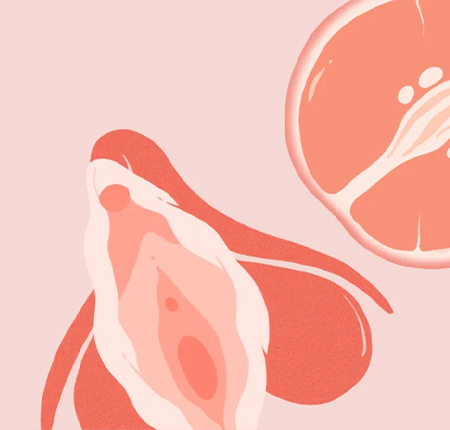
Anatomy of the vagina & other internal sexual organs
The female genital system includes both elements that we can see (externally) and some that we cannot see (internally). Together, they work as a whole and ensure the normal functioning of your body. How about understanding them individually?
Let's start with what is seen, externally:
pubic hair ➡ creates a barrier that prevents bacteria and viruses that cause infection or disease from entering the vagina
labia minora and labia majora ➡ help protect the inside of the vagina from external contamination while also ensuring the right humidity thanks to the glands
hymen ➡ surrounds the opening of the vagina and, as a rule, does not completely cover the opening of the vagina, it is a flexible membrane that does not always detach during the first sexual contacts
clitoris ➡ contains numerous nerve endings and changes its volume in response to sexual stimulation
perineum ➡ represents the area between the vagina and the anus, it is important that after using the toilet, you always clean the area with movements from the front to the back (this way you avoid bacteria from faecal matter entering the vagina)
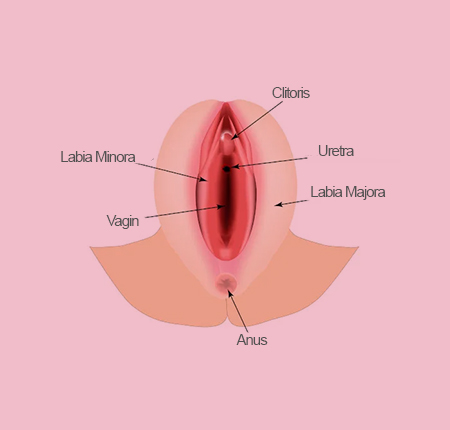
Internally we have:
the ovaries ➡ at their level, the ovules mature until the moment of ovulation, when they are released
fallopian tubes ➡ in number of two, these are the access routes through which the ovum migrates from the ovary to the uterus
the uterus ➡ is the place where the embryo develops, following fertilization, and grows during pregnancy together with the baby
the cervix ➡ is connected to the vagina and is the hole through which menstrual blood is eliminated
the vagina ➡ this is a cavity with a downward opening that connects the vulva to the uterus, it can change shape and size, it is the exit channel for the baby and is where the tampon should be inserted
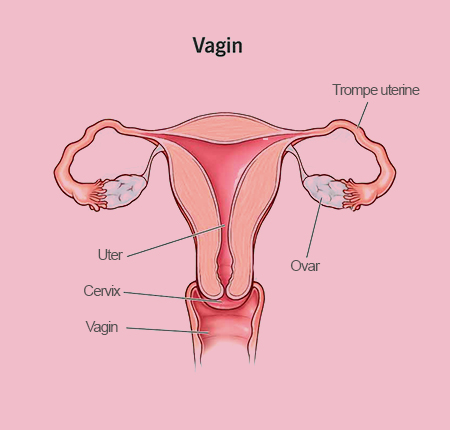
Vulva & vagina - What's the difference?
The word vulva comes from the Latin "volva" which means covering, protection, so it makes sense when we say that the vulva is the external part of the genital system. This includes all the external organs and structures, namely: the mount of Venus (that bulge in the pubic area), the labia majora (at the wide outer opening), the labia minora (surrounding the vaginal opening), the erectile organs (the clitoris), the vaginal vestibule and the glands vestibular.
As for the vagina, as we have already seen, it belongs to the category of internal sexual organs and connects the vulva to the uterus. Another mystery solved!
Types of vagina depending on the vulva - How does it look?
Now that we know what the vulva is, we can talk about how much it differs from person to person and how exciting it is to observe their diversity! If you've ever looked at your vulva and wondered...Is it normal for it to look like this? Yes, queen, welcome to the team!
No matter what you find on the internet, know that there are no "types" of vulva, there is no "normal" color and shape, and unfortunately, we can't even predict how much hair you will grow in your private area.
There is only one rule. No two vulvas are the same. 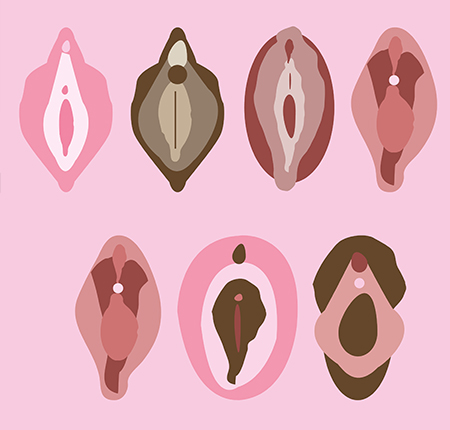
However, we talk about some common variations in shape, size and color and get used to the idea that every woman is unique, especially in this regard.
Vulva with asymmetrical labia
Your vulva may look asymmetrical, meaning one of your labia is larger or smaller than the other. As with the human face, symmetry is not the rule, but rather the exception, so this aspect is nothing to worry about.
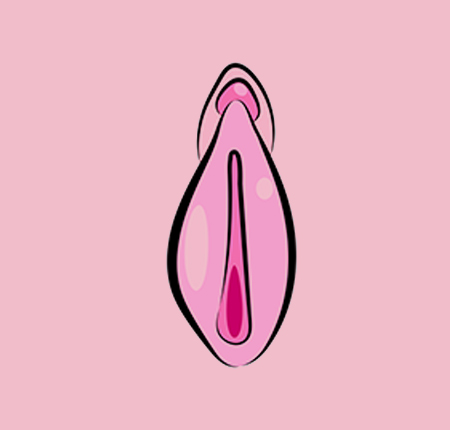
Vulva with small labia
You may notice that the labia are buried in the vulva, or the outer labia are larger and cover your labia minora, nothing unusual.
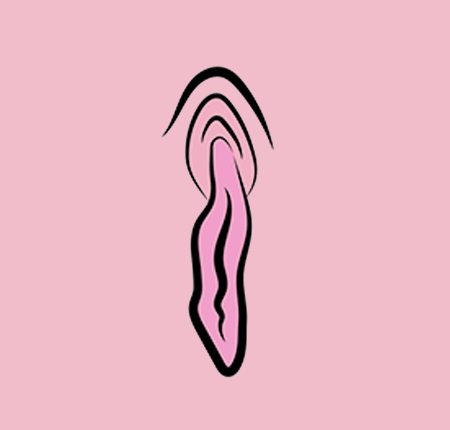
Vulva with large outer & inner labia
You may have larger or more swollen labia. If your labia go past your vulva and stick out, know that it's completely normal.
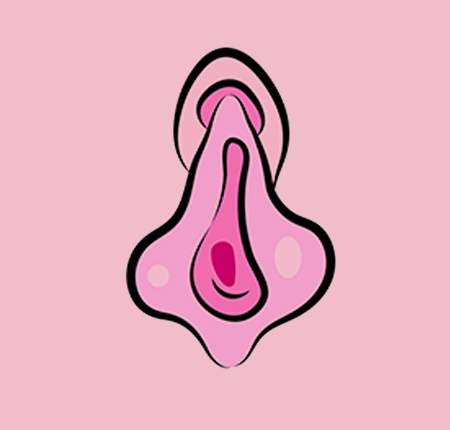
Vulva with outer labia more visible
There are also vulvas with small or shorter outer labia that reveal more of the labia minora.
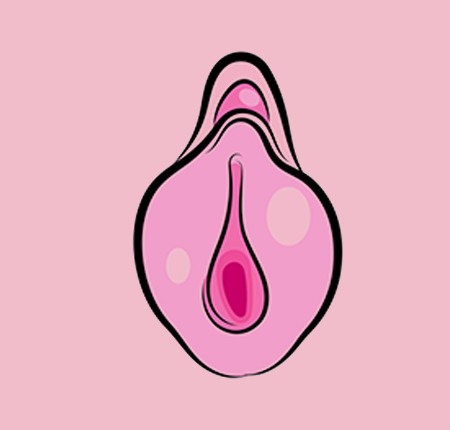
Vulva with more visible inner labia
On the other hand, there is also the possibility of having a vulva whose inner labia are more prominent or longer.
Vulva with small or large clitoris
Your clitoris may be larger or more sensitive. It is estimated that the size of the clitoris can vary from the size of a small pea to the size of a thumb.
Vulva of different colors
Depending on a number of factors, the color is different from one vulva to another. No, they are not all rosy. Some are brown or even red. However, some discoloration in the skin around the vagina, bright red skin or a rash could be signs that something is wrong.
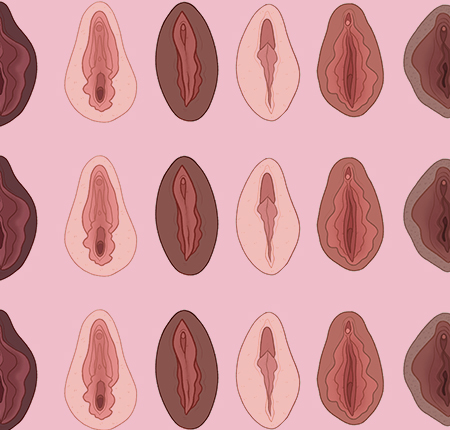
Size - How deep is a vagina?
You've asked yourself many times, you have to admit! And the truth is...it depends. Even the specialists took a long time to decide.
After much debate and study, the conclusion is that the average size of a vagina is 9.6 centimeters and the average vaginal opening is 2.9 centimeters in width. It's just that...your vagina has a superpower. It has the ability to stretch to allow something in or out as needed.
For example, when you are not aroused, the vagina has a length (also understood as depth) of about 2 to 4 centimeters, while when you are aroused it can stretch from 2 to 8 centimeters. Thus, we have more surface in contact that produces excitement, secretion of hormones and endorphins.
On the other hand, during childbirth, the vagina stretches to allow the baby to pass through the birth canal, and one study says that it can expand to more than three times its normal size. It seems that we have the power to allow a child weighing up to 5 kilograms to pass through.
The vagina after birth - Can the appearance change?
If you don't have children, know that giving birth is a beautiful and seemingly impossible mission at the same time. Lucky for us, our vagina and body know what to do.
After birth, the tissue will usually recover back to its pre-pregnancy state. Sometimes the vagina can relax after childbirth as a result of stretching of the pelvic muscles near the vagina. This change manifests itself differently from woman to woman and can be influenced by the size of the child, complications during birth, but also by genetic factors.
Foul-smelling secretions from the vagina - When should we worry?
Normal vaginal discharge is a healthy way for the body to clean itself and a natural way to protect the vagina. They become more abundant with sexual arousal and ovulation, but also the use of birth control pills or emotional stress can cause imbalances.
Most of the time, the causes of abnormal secretions are bacterial infections. The colors of vaginal secretions vary from white to dark brown, but the ones that represent an alarm signal are those of a yellowish, greenish shade, with an unusual, unnatural consistency and a fetid smell.
As for the vulva...how do we protect it?
To prevent irritations, infections and problems from making their way into your intimate life, the Enroush team of specialists has created a gentle intimate gel with your vulva . The gel provides the antibacterial protection you need every day, while soothing and moisturizing, without affecting the pH balance. It cleans, hydrates and protects the intimate area, being created from 95% natural ingredients and 0% parabens. You and your vulva will be unstoppable!
Affections & diseases of the vagina
Vaginal infections can have different causes:
– multiple sexual partners;
– antibiotics;
– the use of contraceptives;
– diabetes mellitus;
– feminine hygiene products used in excess or non-compliant;
- scented soaps.
Any woman, at any age can face conditions or diseases of the vagina, so it is good to know how to identify each problem and how to treat it. Here are the most common problems faced by the vagina.
Vaginal dryness - dry vagina
It is important to know that vaginal dryness can have both physical and psychological causes, and medications can cause the absence of fluids. Vaginal dryness can occur at any age, but once you know the cause, it can be treated.
Additionally, the chemicals in most menstrual care products can cause vaginal dryness and irritation, so the solution is simple: choose only menstrual products made from organic cotton only. If you want to learn more about the 100% natural Enroush products or read more about vaginal dryness , we invite you to enroush.ro , where we put care for your body first.

Vaginitis - inflammation of the vagina
Another fairly well-known problem is inflammation of the vagina, which can be manifested by discharge, itching and pain. Usually, the cause of vaginitis is a change in the balance of vaginal bacteria or an infection. Low estrogen levels after menopause and some skin conditions can also cause vaginitis.
Vaginismus - the involuntary contraction of the vaginal muscles
Vaginismus represents the permanent/recurrent difficulty of vaginal penetration of any kind: finger, medical device or penis, in the context of desired and freely consented sexual intercourse, not in conditions of abuse. There is an involuntary contraction of the pelvic muscles associated with important emotional symptoms: avoidance behavior, phobia, fear, fright.
Vaginal candidiasis
Candidiasis is an infection caused by a type of fungus called Candida. It normally lives inside the human body, in the oral cavity, throat, intestine, vagina and on the skin, without causing problems. Sometimes Candida can multiply and cause an infection if the environment inside the vagina changes.
Being a recurring problem, we have dedicated an entire article to Candidiasis and we invite you to read it here
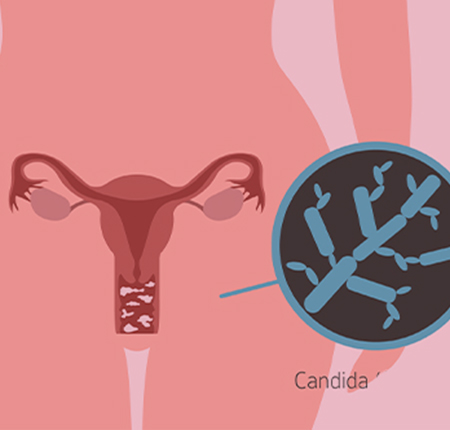
Genital warts
Genital warts appear as small, skin-colored bumps. They can be so small that they are barely noticeable or they can look like cauliflower. Sometimes genital warts are not accompanied by symptoms.
Genital herpes
Genital herpes is a sexually transmitted infection that can be transmitted through sexual contact. Even in the absence of blisters or specific symptoms, it is possible for a person to be infected with the herpes virus. The infection can be treated, but it must be remembered that this type of virus is highly contagious.
GONORRHEA
Gonorrhea is a sexually transmitted infectious disease and is a serious public health problem worldwide. It usually affects warm, moist areas of the body, such as the private area, eyes, throat and anus, and can affect both men and women. Gonorrhea is transmitted through unprotected sexual contact or at birth, affecting the newborn.
Chlamydia
Chlamydia is a bacterial infection that can affect both women and men. Most cases are asymptomatic, which makes it difficult to detect the infection and favors its spread. It is not difficult to treat, but if left untreated it can cause serious health problems, especially for women.
Vaginal cancer
Vaginal cancer is a rare form of cancer located in the vagina. This type of cancer occurs most commonly in the cells that line the surface of the vagina, the canal that also bears the name of the birth canal. Women with early-stage vaginal cancer have the best chance of a cure, while cancer that spreads beyond the vagina is much more difficult to treat.
Don't forget, take care of your health and whenever you feel that something is wrong, consult a doctor who can help you specifically with the problem you have.
Myths about the vagina
The shape of the vagina changes if you have more sex. False!
Characterized by elasticity, the vagina expands during sex and then returns to its original shape. It changes shape slightly only after a birth.
Tampons get lost in the vagina. False!
It's not the Bermuda Triangle. The walls of the vagina come closer and can support the tampon because they are flexible and muscular.
The hymen can show if someone has had penetrative sex. False!
The hymen or "vaginal crown" is a thin layer of tissue, located at the entrance to the vagina. It is flexible and in some people it never "breaks", while in others it can "break" while simply exercising.
STDs always have symptoms. False!
A good number of sexually transmitted infections do manifest physically and visually, but many of them are asymptomatic, so regular testing is the most appropriate form of prevention.
Frequently asked questions about the vagina
At the end, we gather together some of the questions that you must have asked yourself at least once in your life and we answer each one separately.
How elastic is a vagina?
Very elastic, during birth the muscles at its level can stretch to more than three times their normal size.
What does an unpenetrated (virgin) vagina look like?
"The first time" is a personal experience, which can be painful or pleasant, or both. Physically, there are no visible changes after sexual contact (with or without penetration), so the concept of "de-virginity" depends on everyone's perspective.
How long do spermatozoa live in the vagina?
Ejaculated sperm can live in the mucus of the woman's vagina for about 3-5 days.
What does a vagina look like inside?
So far we have talked about anatomy, what our vagina looks like in biology books. Practical? You can do a self-exam yourself when you are not menstruating, using a mirror and a light source to observe various changes in your vulva or vagina.























